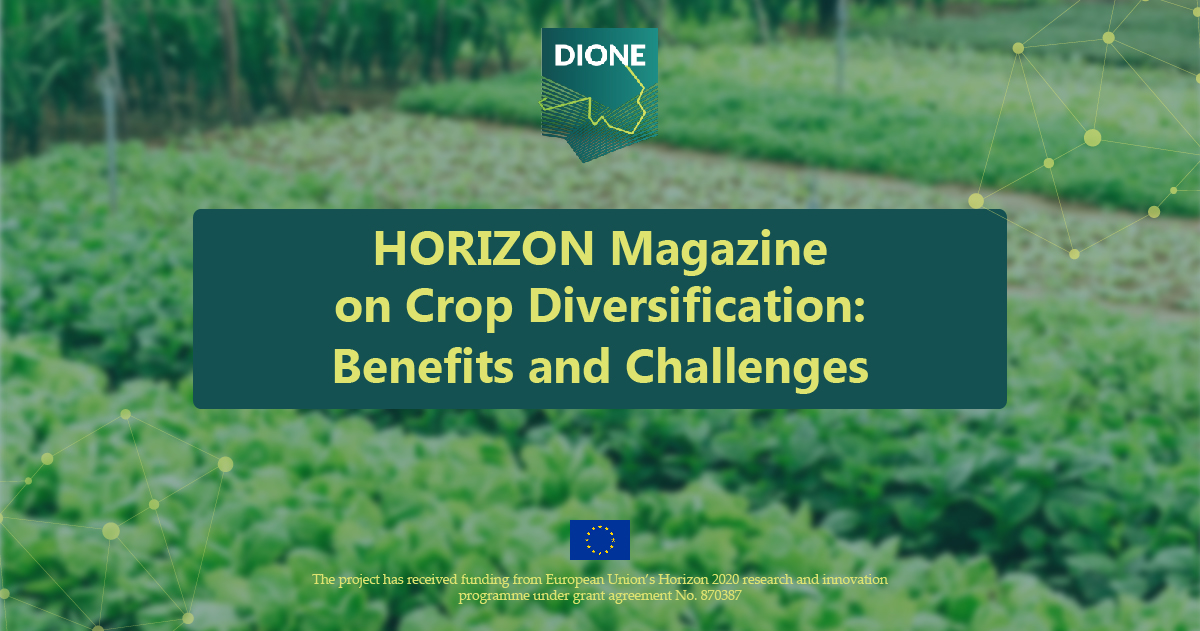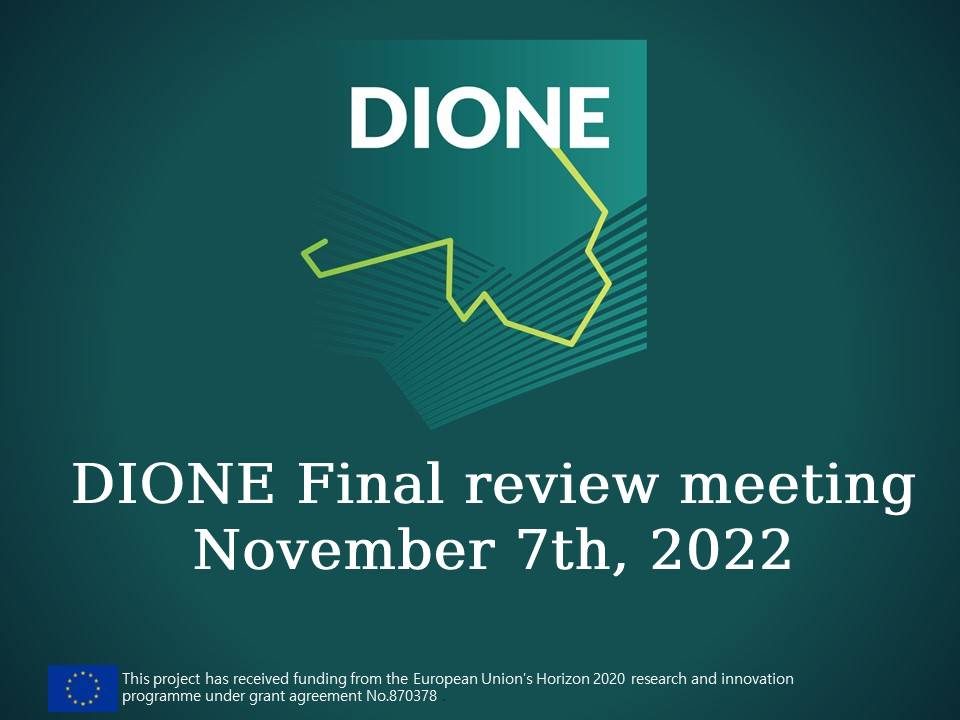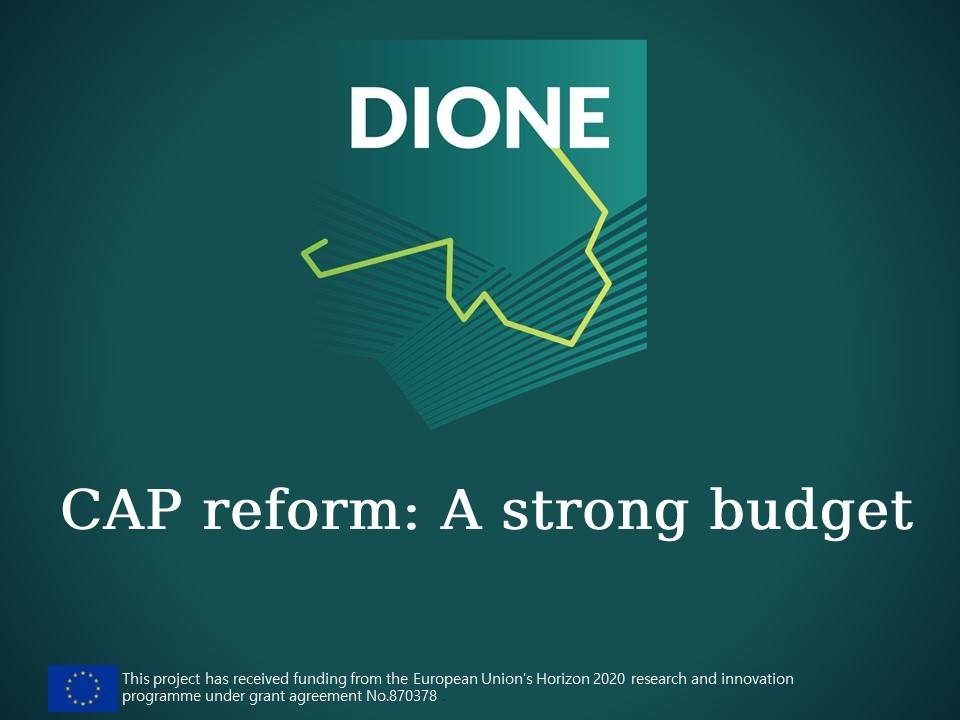
The third Sentinel-2 satellite: What does it mean for EO?
August 31, 2021
DIONE at the Organic Fair “1.Organik Fest Srpske”
September 30, 2021DIONE highlights the importance of crop diversification on farms, but what do HORIZON Magazine and European scientists have to say about its' benefits and challenges?
This week, DIONE is introducing you to the recent research studies about crop diversification as part of the Horizon Magazine Series in which we hear from the next generation of scientists and researchers who are working to tackle global challenges. This particular article titled” Farmers urgently need to diversify, but they cannot do it alone” tells us more about the benefits of crop diversification, but also about the challenges of its implementation and how to overcome them.
As you already know, one of the environmental conditions Common Agricultural Policy (CAP) poses for farmers receiving green payments is crop diversification, meaning farms with more than 10 ha of arable land must grow at least two crops, while at least three crops are required on farms with more than 30 ha. The main crop may not cover more than 75% of the land. To ensure more frequent, accurate and inexpensive compliance checks of crop diversification, among other direct payments rules, the DIONE monitoring toolbox exploits Sen4CAP seminal project results regarding freely available produced crop-type maps. Such maps showcase the capability of Sentinel based data to monitor on a 3–4-day basis the crop diversification rules and are integrated into DIONE Toolbox in a way that can be directly used and is exploitable by the paying agencies.
But the question is why is crop diversification and its subsequent monitoring so important for CAP and environment protection in general? Horizon Magazine interviewed scientists and researchers claim that boosting biodiversity on farms through crop diversification is crucial to make them more resilient to climate change and protect future food security, but it will not happen without change across the food supply chain from seed producer to consumer, agronomists say.
From helping save plant pollinators and soil health to overcoming lack of diverse seeds on the market and the accepting the changes in food supply chain, this Horizon Magazine article covers everything you need to know about crop diversification.
So, what are you waiting? Go check it out by clicking the button down below!
As you already know, one of the environmental conditions Common Agricultural Policy (CAP) poses for farmers receiving green payments is crop diversification, meaning farms with more than 10 ha of arable land must grow at least two crops, while at least three crops are required on farms with more than 30 ha. The main crop may not cover more than 75% of the land. To ensure more frequent, accurate and inexpensive compliance checks of crop diversification, among other direct payments rules, the DIONE monitoring toolbox exploits Sen4CAP seminal project results regarding freely available produced crop-type maps. Such maps showcase the capability of Sentinel based data to monitor on a 3–4-day basis the crop diversification rules and are integrated into DIONE Toolbox in a way that can be directly used and is exploitable by the paying agencies.
But the question is why is crop diversification and its subsequent monitoring so important for CAP and environment protection in general? Horizon Magazine interviewed scientists and researchers claim that boosting biodiversity on farms through crop diversification is crucial to make them more resilient to climate change and protect future food security, but it will not happen without change across the food supply chain from seed producer to consumer, agronomists say.
From helping save plant pollinators and soil health to overcoming lack of diverse seeds on the market and the accepting the changes in food supply chain, this Horizon Magazine article covers everything you need to know about crop diversification.
So, what are you waiting? Go check it out by clicking the button down below!






